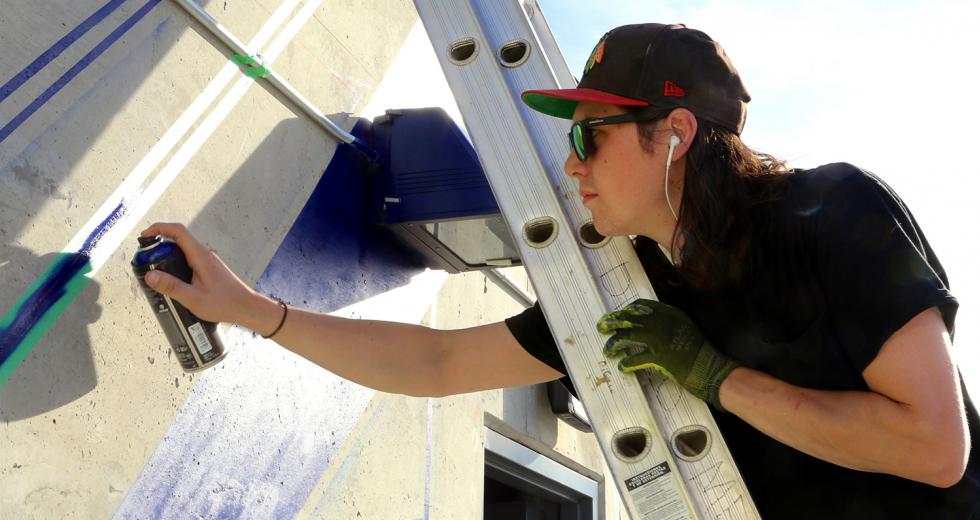Late on the night of Dec. 2, 2016, a fire broke out in a warehouse known as the Ghost Ship, in Oakland’s Fruitvale neighborhood. The warehouse had been functioning as a music venue, artist work space and housing for years.
But the ramshackle nature of the space — with nooks, crannies, dead ends, few exits, little ventilation and questionable power sources — contributed to an environment in which the sudden outbreak of fire meant most people on the second floor of the warehouse were trapped, and 36 people perished.
The fire was a devastating, sudden catastrophe that pulled back the covers on a serious set of issues. Almost immediately, questions of public safety and code enforcement surfaced. Nearly as quickly, the arts community and sympathetic allies pushed back against the calls to find and shut down these unpermitted and non-conforming spaces.
These critiques against a blanket approach to closure cited two imperatives: the importance of creative spaces and artists to the ongoing economic and cultural renaissance occurring in many U.S. cities, and the rapidly increasing costs of living in these cities.
Increased Cost of Living Impacts Artists
For creative people across the U.S., the Ghost Ship tragedy demonstrates the tough choices many face as they try to remain in their community while the cost of living climbs, like in the case of Oakland. Should they seek out spaces they can afford to keep creating and interacting with other artists and creative types? Or decamp to parts unknown with lower rents, but also lacking the community ties they have worked so hard to build?
Ideally, as a region prospers, its existing residents reap equal benefits to those enjoyed by the nouveau riche newcomers, lured back to city centers by flourishing creative scenes, coffee shops and collision spaces. It can take the form of specific steps to protect long-term housing affordability for existing residents, local incentive programs to buttress creative businesses, and increased, coordinated funding for arts organizations and support of working artists.
Oakland has, belatedly, realized it must address this tension. In the aftermath of the fire, Mayor Libby Schaaf issued an executive order that functions as a sort of amnesty for building owners — who are ultimately responsible for ensuring the safety of these DIY spaces, regardless of their use. This practice enables noncompliant owners to emerge from the shadows to improve the conditions of their spaces without displacing the individuals living and working within them. This is a compassionate response to a difficult issue.
Sacramento’s Investment in its Creative Class
Sacramento’s affordability crisis is having similar impacts on its working class, service sector and creative workers. Unlike Oakland, we are in a position to respond more quickly and effectively to the issue — balancing growth and creativity while maintaining affordability.
We have already made effective investments in our creative class. The Warehouse Artist Lofts offer affordable live-work space for working artists. The successes of Art Hotel and Art Street spread the excitement of Sacramento’s art scene throughout the region. Organizations like Sol Collective are receiving public investment to ensure their physical spaces remain centers of collaboration in spite of rising property values. In particular, innovative models like the one employed by WAL should be expanded throughout the city. The benefits to Sacramento’s economy and growing artists community are evidenced by the mini-development boom on the R Street Corridor and the launch of the First Fridays art walk.
Shortly after taking office in December, Sacramento Mayor Darrell Steinberg convened a stakeholder group to explore the needs and potential of the region’s creative economy. Placing the arts, food and technology at the center of the City’s civic agenda, Mayor Steinberg is signaling his recognition of the impact of creative class industries on our region’s urban renaissance — and adopting flexible, innovative approaches to cultivating them. To support the creative economy, Sacramento is putting $500,000 in large and small grants toward pop-ups, activations and other projects in public spaces as part of the Creative Economy Pilot Project.
I’m heartened by the efforts to be inclusive and spread the value of these efforts across all corners of the city. In addition to the pilot project, the City is investing in the arts by increasing the Sacramento Metropolitan Arts Commission annual budget by $250,000 for the next two years, making a long-term commitment to ensure all of Sacramento’s children have access to arts education, and hiring a new arts leader to drive these efforts forward.
These efforts will ensure funding and institutional support that will help develop audiences and revenues for local artists, which in turn will help them pay the bills and remain an essential part of our city’s vibrant culture.
But as Sacramento fights to diversify its economy and attract technology firms, we must also ensure that we maintain and support the creative economy, particularly artists. This means finding ways to enable the ethos of DIY even in the face of pressures to do other, (likely) more lucrative things with the warehouses on the outskirts of town.
As the mayor’s creative economy effort moves forward, Sacramento should find ways to incentivize property owners to continue supporting DIY art venues, either through subsidies or programs to help these venues achieve code compliance, without closing them preemptively. These grungy, out-of-the-way and hidden-in-plain-sight spots are the crucible of any thriving creative community, where artists collectives come together and invite residents and visitors alike to experience the boundary-pushing, inspiring communal spirit that keeps life interesting and fun.




Comments
Good article, Maya. I'm glad to see the City investing in the arts, and glad to see you point out that the housing issue portends a genuine danger to the creative economy that we are trying to build. Why are overwhelmingly luxury and 'market rate' units being put in the central city? Where are these artists supposed to live and create things? I understand that only 6% of railyards units will be affordable - we're missing our big chance to get this puzzle right.